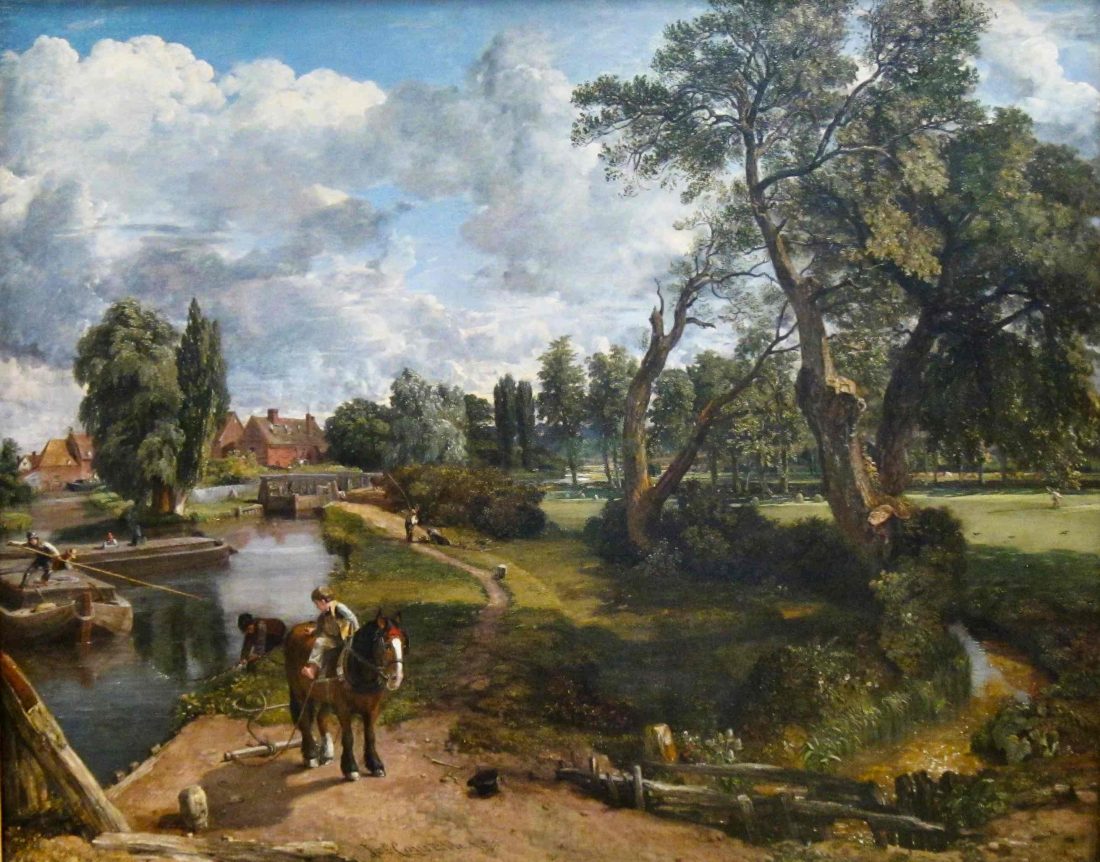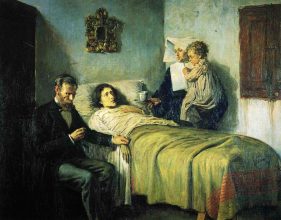What is the best way to improve the safety and quality of care in clinical practice?
John Constable was interested in everyday life as it was actually lived. Many of his greatest paintings are of the area he knew best, the countryside near his family home in Flatford. Famously, he spent days upon days patiently observing cloud formations, sketching and painting in the open air. Previously, artists had been more concerned with idealised images—imagined in their studios— mythical landscapes, heroes and villains, moments of great drama, triumph or tragedy. Constable’s paintings depict real people and the quotidian world in which they lived their daily lives.
What do you see when you look at Flatford Mill? Perhaps, a sunny, summer’s afternoon in the English countryside. The light shines through the clear waters of the leat, but there’s enough of a breeze to ruffle the river’s surface and to create movement in the trees. In the clouds there’s a warning of coming rain, but the hay has been scythed and safely gathered in. In the foreground, a barge is being poled under Flatford Bridge, the towrope coiled, and the horse walked round to the far side. An ordinary day in Flatford.
What do you think happened next?
How can we possibly say? Understanding every movement and motive, every material presence, every factor that might act, and have impact, we still couldn’t predict the next moment. The chances are that nothing noteworthy happened: the barge passed under the bridge, the towrope was reattached and the horse trudged slowly on its way; the fisherman on the towpath went home with tall tales, and no fish; and later on, there was a light shower of rain.
But what if I told you that the next thing to happen was that the boatman’s time-worn pole broke under the strain; the little boy, trying desperately to hold the heavy barge on the rope, was pulled into the water; and unable to swim he drowned.
Now you see the whole scene in a different light. Why didn’t the boatman realise that his equipment was faulty and needed replacement? Why ever was he trying to manoeuvre such a heavy boat alone, and without a spare pole? And why, oh why, did he allow the small boys to join in the work, particularly when he knew they couldn’t swim?
In short, in hindsight: human error, faulty equipment, failure of planning, a gross deviation from best practice.
And yet… nothing has changed in this everyday scene. Only our interpretation.
in health care, systems… cannot be decomposed in a meaningful way and the functions are not bimodal, neither in detail nor for the system as a whole.
Hollnagel et al
In healthcare we have usually taken this second approach to improving safety. Our aim has been to reduce accidents and incidents. When there is an adverse outcome we assume something specific has gone wrong, that we can look back, find it, and fix it—the causality credo. We look for the root causes, asking why, why, why, why, why? We adopt a bimodal view: that either things were done correctly, according to protocol, or that there was a failure to follow, and a directly consequent problem.
And always we find causes: evidence of people doing things that they shouldn’t; or not doing things that they should; or who should have known better. Ironically, we try to improve safety, solely by analysing situations where it is lacking.
More recently there has been a move to look beyond individual human performance towards identifying faulty components of the systems in which they practice, surfacing contributory factors. But we still focus on malfunctions, moments of drama, and times of tragedy. Humans, alone or in groups, are the most variable elements of these systems and continue to be seen as a liability to be managed, constrained, limited: performance variability is the enemy.
Unfortunately, seeing deficiencies in hindsight does nothing to explain the generation or persistence of those deficiencies.
When we look back at the events leading to a critical incident it’s easy to find a direct causal line from actions to outcomes. We can draw out these bones of a story— perhaps as an Ishikawa diagram—and perceive an inevitable, linear path towards failure. But this is creating a completely false perspective on the events that preceded the accident.
Trying to achieve safety by constraining performance variability will inevitably affect the ability to achieve desired outcomes as well and therefore be counterproductive.
Complex systems of healthcare are emergent: it is not possible to break them down into meaningful, isolated components, nor to predict outcomes from these constituents. Many of the identified causes will have produced beneficial outcomes on innumerable occasions and indeed may have prevented serious adverse outcomes many times. In clinical medicine we talk about the retrospectoscope, a far-seeing instrument which shows us what we would have done: clearly, simply and fallaciously.
the ability to make performance adjustments is an essential human contribution to work, without which only the most trivial activity would be possible
Hollnagel et al
As a reaction to this focus on negative events, there has been interest in exploring particularly good instances of care. Campaigns such as Learning from Excellence try to celebrate examples of best practice. These approaches, however, share a heroes-and-villains view of clinical practice, and continue to make rare instances the focus for investigation and learning.
In From Safety-I to Safety-II, Erik Hollnagel and others argue that this is the wrong way to look at improving safety and patient care. Rather than asking why things went wrong on isolated occasions, or indeed why things turned out surprisingly well due to exceptionally good behaviour, we should mainly focus on why things go right most of the time. They call this approach, Safety-II, a fundamental change in perspective from Safety-I. They are not suggesting that we ignore outlying events, but that our main interest should be understanding everyday work-as-actually-done.
Things do not go right because people behave as they are supposed to, but because people can and do adjust what they do to match the conditions.
Systems of patient care attempt to impose order on inherently convoluted situations; there is uncertainty and ambiguity; and the conditions are often intractable and in flux. Under these circumstances performance variability is a key asset: the fluid ability to shift and shape practice depending on context is the oil that keeps the wheels turning. Workers in many industries have found that the quickest way to paralyse a complex system is to work-to-rule: following, to the letter, the systems of work that managers have imagined can be as disruptive as a complete withdrawal of labour.
everyday clinical work is—and must be—variable and flexible.
Hollnagel et al
Patient care is diminished when there is blind compliance with protocols, guidelines and standard operating procedures. Patient outcomes are often dependent on clinicians tailoring their management to the context: performance variability is the essence of good care.
Hollnagel argues that the route to improved safety lies through a better understanding of work-as-done rather than attempting to constrain that work into work-as-imagined. We can only comprehend failure through a better appreciation of the landscape of routine, everyday success. Some would say that, in a busy, cash-strapped health service, this is an idealistic, unrealistic, head-in-the-clouds approach; Constable and Hollnagel suggest that it is exactly the opposite.




